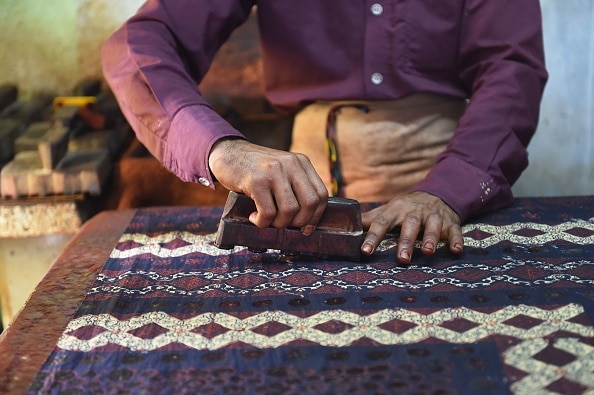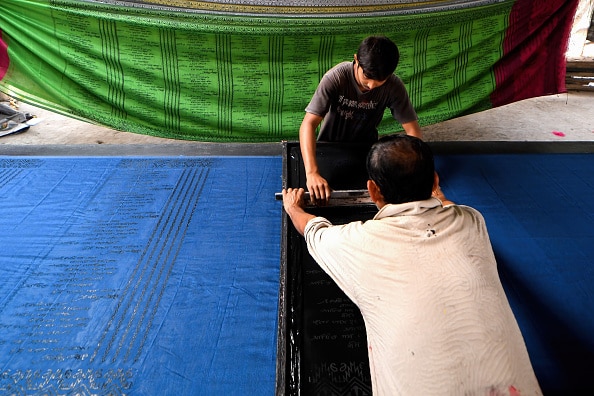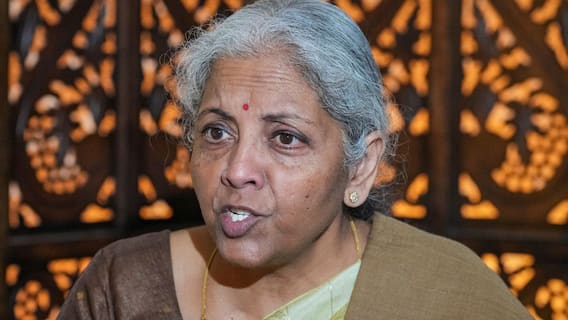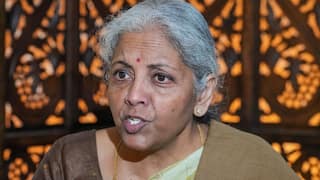World Ethnic Day 2023: Unfurling The Stories Behind Indian Ethnic Outfits
On World Ethnic Day, ABP Live sought the opinion of experts who discussed the variety of Indian clothing, fabric, and how they differ from each other.

New Delhi: India is a country with rich cultural heritage. Every region in India has a unique collection of traditional outfits. Indian traditional clothing has roots in the centuries-old cultures of the nation, right from the Indus Valley civilization when people primarily wore garments made of locally grown cotton. The sculptures, paintings, and other human artistic creations discovered in historic cave monuments gives us a glimpse of how Indian clothing evolved.
In this regard, ABP Live sought the opinion of experts who discussed the variety of Indian clothing, fabric, and how they differ from each other. Additionally, they also told how Indian fashion evolved with time to cater to the needs of the present generation.
ABOUT THE NORTH INDIAN AND SOUTH INDIAN STYLES OF CLOTHING:
Arindam Chakravorty, Brand Head at Aurelia shared some insights about the North Indian and South Indian clothing styles.
- Traditional Attire:
The traditional attire for North Indian women is the Salwar Suit, a three-piece outfit that offers a comfortable and modest option for everyday wear and special occasions, while that for South Indian women is the Saree, particularly those made of rich silk, renowned for their elegance and intricately woven designs.
- Fabric and Embroidery:
The North Indian designs often incorporate a variety of fabrics such as silk, cotton, and georgette with intricate and vibrant embroidery work that adds a luxurious touch to the garments. Whereas, South Indian designs emphasise the use of high-quality silk fabrics, especially for sarees. These silk sarees often feature elaborate woven designs and gold thread work.
- Colours and Patterns:
The North Indian designs embrace a wide range of colours, including bright and bold shades, while the South Indian ones are known for their vibrant and contrasting colour palettes. Traditional sarees often feature gold, red, and green hues, with patterns like temple borders, checks, stripes, and floral motifs adding a distinct charm.
- Accessories:
North Indian women often enhance their outfits with accessories to complement their overall look, on the other hand, South Indian women commonly adorn themselves with intricate gold jewellery with their traditional outfits.
ALL ABOUT INDIAN SAREES:
The Indian saree is among the oldest types of clothing. It is mentioned in the Vedas, some of the oldest literature ever written by humans, and documents from the Indus Valley Civilization also show that it was in use at the period. The fact that it is old hasn't diminished its appeal, though. The saree is as popular as ever, appearing on the runways of prestigious fashion events, in Bollywood, on the streets of rural and urban India, on trendy college kids as well as their traditional grandmothers.
The Variety Of Indian Sarees:
Every state in India has their own form of this beautiful 6-yard piece. Not, just that, the stying also differs as one moves across the country. Considered as one of the most versatile piece of clothing, the Indian saree are often treasured pieces passed on from one generation to the next.
Talking about the varieties, Ritu Oberoi, founder of ForSarees said, "India is rich in craft and weaving varieties. So much so that every 50 km in a rural setup will give you a new weave and craft. Gujrat is very popular for indigenous organic cotton, known as Kala cotton, Kutch woven sarees, Ajrakh block printing, and Soof embroideries, while Telangana is one of the most craft-centric states that give us Ikkat, golbamma sarees, gadwall, narayanpet, managalgiri sarees, etc."
"Again, speaking of Srinagar, it is known for Aari and Sozni work on silks and pashminas, while UP has a lot to offer, right from Banarasis to Mubarakpur sarees, Chikankari to Appliqué with cotton and silk both being prevalent.", she further added.

The Craftsmaship Involved In The creation Of Sarees:
A handloom and handcrafted saree go through many steps, from spinning the yarn, preparing the loom, and weaving the saree using indigenous techniques.
In this regard, Ritu gave some insights into the craftsmanship involved in Katha and Soof Embroidery.
She said, "For kantha– first, the designs are traced on fabric, and then embroidered using darn stitch, whereas in Soof Embroidery, no pattern is printed on the fabric. Still, the embroidery is done basis of yarn count, making it too cumbersome and time-consuming. Hence each saree you see is a piece of art."

Ajrakh Block Print:
Ajrakh is one of the oldest block printing techniques of India. It originated from the Sindh region of present-day Pakistan and is currently practised in Kutch, Gujarat. This craft has survived the test of time and has been kept alive through generations. The geometric motifs are what differentiates Ajrakh from the other block printing techniques of India.
"One of the most interesting anecdotes about this is that there are two meanings of the word 'Ajrakh'- One, coined from the Hindi words 'aaj rakh' which means keep it today. This signifies the patience and dedication that goes into this craft form which has over 22 steps in its process. Two, it comes from the Arabic word 'Azrak' which means blue. This signifies the use of natural Indigo in this craft.", said Matrika, co-founder of Inkriti.
She further went on to add, "Block printing as a craft is a reflection of skill, patience and dedication. In a time when people are rushing around, this technique forces us to slow down and admire the intricacy of carved wooden blocks stamped one after the other, on top of each other with precision."
THE IMPACT OF WESTERNIZATION ON TRADITIONAL INDIAN OUTFITS:
Indian ethnic wear has evolved over time to cater to the needs of the people. The influence of westernisation on contemporary ethnic fashion is evident in several ways and has given rise to the emergence of Indo-Western fusion wear, which appeals to the younger audience.
According to Arindam, "The use of new fabrics and textiles such as georgette and chiffon has made ethnic wear more comfortable and adaptable. Patterns, colours, and embellishments have also transformed, combining traditional motifs and embroidery techniques with contemporary designs. These changes have made Indian ethnic wear more versatile, suited to different occasions, and reflective of the evolving fashion preferences of the people in the country."
Sarees are our legacy and have an emotional connection with every woman. We now see a contemporary touch to these as well, especially in styling.
"Gen-Z is seen styling sarees with pants or like a wrap- a-round without under skirts (petticot). Sarees no more need a burden of a fall, petticot or a blouse. We see some cool saree styling with crop tops, shirts, and even T-shirts. This freedom to style as they please go hand in hand to popularise saree as a chic affair.", said Ritu.
Trending News
Top Headlines











































